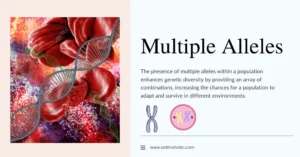+91-7303290503, +91-9557169661 | MON to SUN 10:00 AM - 6:00 PM
Controlled and Non-Controlled Observation
Observational methods have long played an essential role in anthropological research, offering insights into human behavior, culture, and social interaction. Both methods have unique advantages and drawbacks, with applications in various contexts.

Controlled Observation
Definition and Context
Controlled observation refers to a method wherein researchers manipulate or control specific variables to observe the effect on the subjects’ behavior [1].
Table 1: Characteristics of Controlled Observation
| Feature | Description |
|---|---|
| Environment | Structured, often laboratory settings |
| Variables | Manipulated by the researcher |
| Observer Influence | Direct, active involvement |
| Data Collection | Systematic, using predetermined criteria |
| Advantages | High control, replicability |
| Disadvantages | Potential artificiality, limited ecological validity |
Application in Anthropology
In anthropology, controlled observation is often used in cognitive and psychological studies of human behavior, where specific variables can be isolated [2]. The process may include tasks, problem-solving activities, or other interventions designed to explore cognitive processes.
Strengths and Weaknesses
Controlled observation offers the advantage of high control and replicability. However, this method may lack ecological validity, as the observations are made in artificial environments [3].
Non-Controlled Observation
Definition and Context
Non-controlled observation, also known as naturalistic or participant observation, occurs without manipulation of variables or the environment, providing a more authentic view of behavior [4].
Table 2: Characteristics of Non-Controlled Observation
| Feature | Description |
|---|---|
| Environment | Natural settings |
| Variables | Not manipulated by the researcher |
| Observer Influence | Indirect, passive involvement |
| Data Collection | Often qualitative, based on real-life context |
| Advantages | Ecological validity, real-world insights |
| Disadvantages | Lack of control, potential subjectivity |
Application in Anthropology
This technique is commonly used to study cultural practices, social norms, and human interaction in real-world settings [5]. It allows researchers to immerse themselves in the culture, gaining insights from an insider perspective.
Strengths and Weaknesses
The strength of non-controlled observation lies in its ecological validity, but it might be challenged by issues of subjectivity, bias, and a lack of control over external variables.
Comparative Analysis
Controlled and non-controlled observations offer different insights into human behavior. While controlled observation provides a precise understanding of specific variables, non-controlled observation offers a broader, more naturalistic view.
Key Differences
- Environment: Controlled observation occurs in structured settings, while non-controlled observation is conducted in natural environments.
- Researcher Involvement: Controlled involves direct manipulation, whereas non-controlled relies on passive observation.
- Data Collection: Controlled is more systematic, while non-controlled often utilizes qualitative methods.
Conclusion
Both controlled and non-controlled observations are integral to anthropological research, each catering to different research questions and contexts. The choice between these methods depends on the research objectives, the nature of the phenomena under study, and the desired level of control and authenticity.
References
[1] Babbie, E. (2010). The Practice of Social Research. Wadsworth Cengage Learning.
[2] Nisbett, R., & Wilson, T. (1977). Telling More Than We Can Know: Verbal Reports on Mental Processes. Psychological Review, 84(3), 231-259.
[3] Brewer, W. F. (2000). Bartlett, Frederick Charles. In A. E. Kazdin (Ed.), Encyclopedia of Psychology, Vol. 1. American Psychological Association.
[4] Geertz, C. (1973). The Interpretation of Cultures. Basic Books.
[5] Malinowski, B. (1922). Argonauts of the Western Pacific. Routledge & Kegan Paul.




